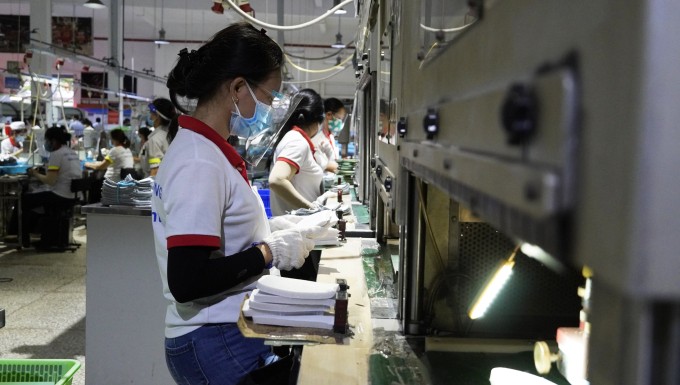
Viet Nam targets to bring a million back to work by end of the year
Latest
 |
| Workers in Thuan Dao Industrial Park, Ben Luc, Long An go to work during the COVID-19 time. (Photo: Hoang Nam) |
Extended social distancing measures in cities and provinces across the country have hit the labour market hard. Since the beginning of the year, the income and job security of 13 million workers have been affected. Things took a turn for the worse in June when as many as 10 percent of the country's businesses were forced to shut down, putting almost 4 million people out of work, according to labour experts.
Workers, who are mostly from the countryside, have had to either leave large cities or seek temporary employment since. It is thought that many businesses will face a shortage of workers once the virus is under control. In a recent survey, only 60-70 percent of workers said they would return to large cities.
Vu Quang Thanh, deputy-director of a job agency in Ha Noi, said as the vaccination drive picked up and social distancing measures were relaxed, there have been signs of recovery in the labour market. Firms will ramp up production to meet the typical higher demand that occurs during the last quarter of the year but must fill many vacancies to do so.
In light of recent developments, the department of labour under the MOLISA has been working closely with Ho Chi Minh authority to help workers return to the city. Vice Chairman of the municipal People Committee Vice Chairman Vo Van Hoan also called on businesses to take steps to retain their workforce.
Dr. Nguyen Thi Lan Huong, former head of the Institute of Labour Science and Social Affairs under the MOLISA, said employment centres will play a crucial role in connecting workers and employers in the months to come. In the long run, however, the country must invest in retraining programmes for workers to help them secure better job opportunities.
Many government efforts have been implemented to support workers, notably Government Decree 116/NQ-CP that designated 30 trillion VND as support funds for those who have been affected by the pandemic.





















